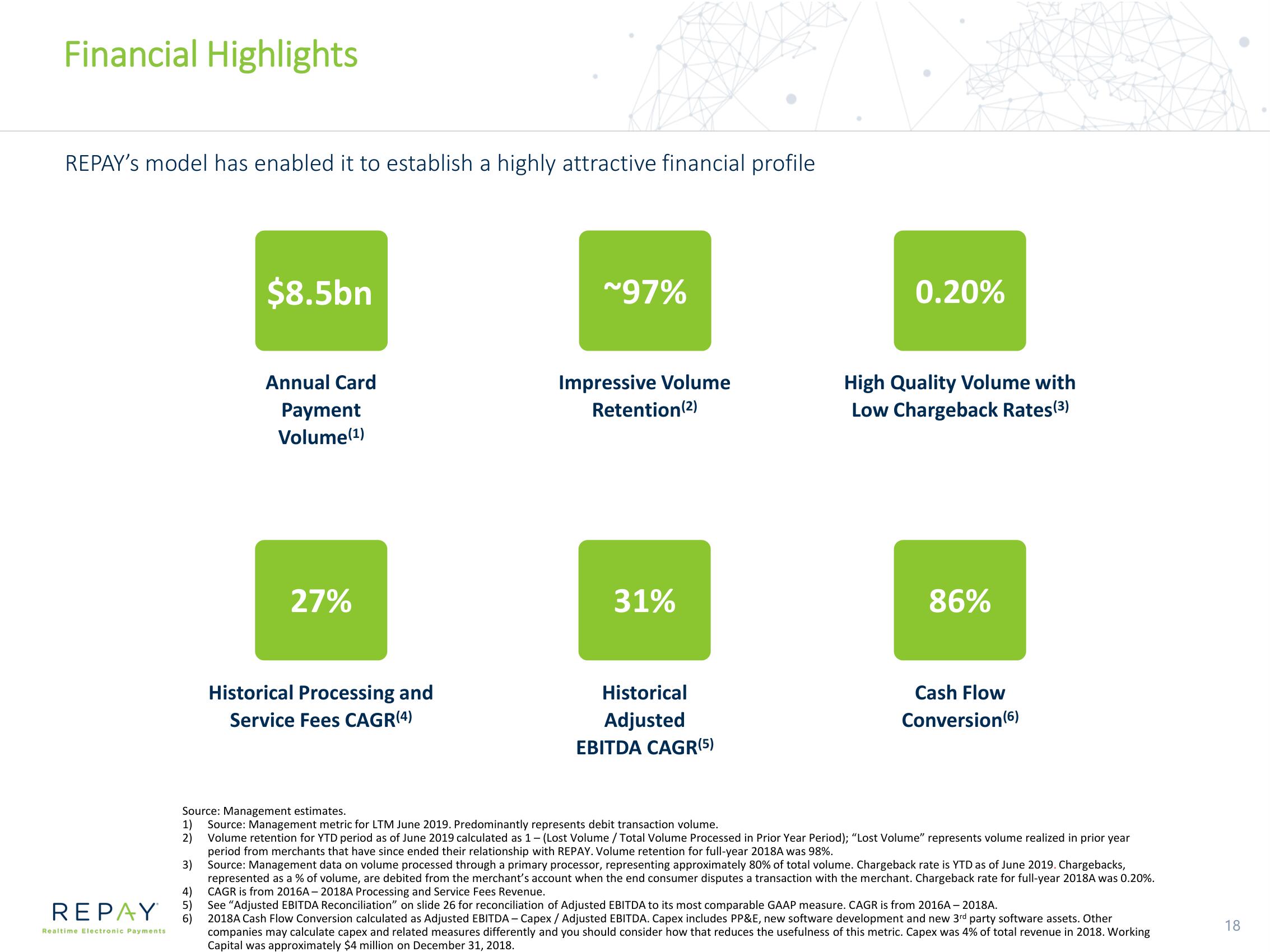Repay SPAC
Financial Highlights
REPAY'S model has enabled it to establish a highly attractive financial profile
$8.5bn
3)
4)
5)
REPAY 6)
Realtime Electronic Payments
Annual Card
Payment
Volume (¹)
27%
Historical Processing and
Service Fees CAGR (4)
~97%
Impressive Volume
Retention (2)
31%
Historical
Adjusted
EBITDA CAGR(5)
0.20%
High Quality Volume with
Low Chargeback Rates (³)
86%
Cash Flow
Conversion (6)
Source: Management estimates.
1) Source: Management metric for LTM June 2019. Predominantly represents debit transaction volume.
2) Volume retention for YTD period as of June 2019 calculated as 1 - (Lost Volume/Total Volume Processed in Prior Year Period); "Lost Volume" represents volume realized in prior year
period from merchants that have since ended their relationship with REPAY. Volume retention for full-year 2018A was 98%.
Source: Management data on volume processed through a primary processor, representing approximately 80% of total volume. Chargeback rate is YTD as of June 2019. Chargebacks,
represented as a % of volume, are debited from the merchant's account when the end consumer disputes a transaction with the merchant. Chargeback rate for full-year 2018A was 0.20%.
CAGR is from 2016A-2018A Processing and Service Fees Revenue.
See "Adjusted EBITDA Reconciliation" on slide 26 for reconciliation of Adjusted EBITDA to its most comparable GAAP measure. CAGR is from 2016A-2018A.
2018A Cash Flow Conversion calculated as Adjusted EBITDA-Capex / Adjusted EBITDA. Capex includes PP&E, new software development and new 3rd party software assets. Other
companies may calculate capex and related measures differently and you should consider how that reduces the usefulness of this metric. Capex was 4% of total revenue in 2018. Working
Capital was approximately $4 million on December 31, 2018.
18View entire presentation